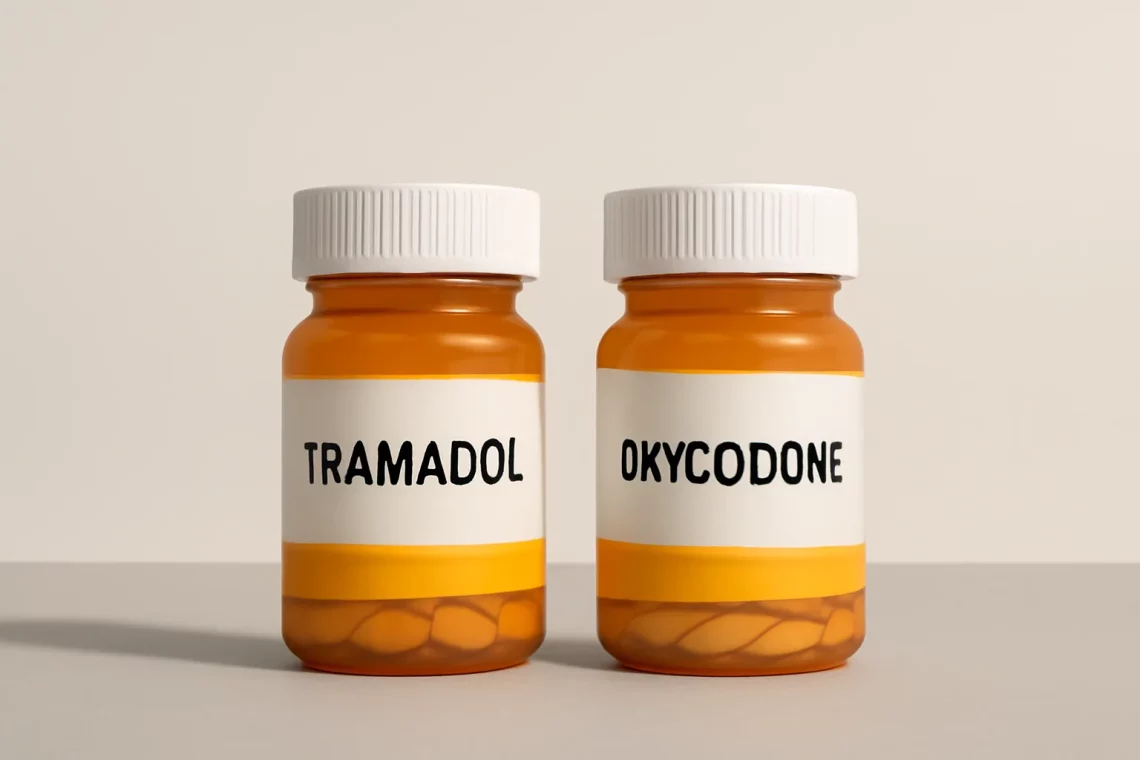-
Tramadol vs Oxycodone: A Comprehensive Comparison of Pain Relief Options
Tramadol and oxycodone are two commonly prescribed medications used for pain relief. Both belong to the opioid class of drugs, which are known for their effectiveness in managing moderate to severe pain. However, they have different chemical structures, mechanisms of action, and potential side effects, making them suitable for different patient populations and pain management strategies. Understanding these differences is crucial for patients, caregivers, and healthcare professionals when determining the most appropriate treatment options. In recent years, the conversation surrounding opioid use has intensified, with increased awareness of the risks associated with opioid dependency and abuse. This has led to the exploration of alternative pain management therapies as well as…
-
Lyrica vs Amitriptyline: Comparing Benefits and Side Effects
Lyrica and Amitriptyline are two medications that are often discussed in the context of managing chronic pain, anxiety, and various neurological conditions. While both drugs share some similarities in their therapeutic uses, they operate through different mechanisms and can have distinct side effects. Understanding these differences is crucial for patients and healthcare professionals alike, as the choice between Lyrica and Amitriptyline can significantly impact treatment outcomes. Lyrica, also known by its generic name pregabalin, is primarily used to treat neuropathic pain, fibromyalgia, and certain types of seizures. It works by modulating the release of neurotransmitters in the brain, which helps to reduce pain and improve mood. On the other hand,…
-
Fentanyl Patch vs Butrans: Understanding Pain Management Options
The use of transdermal patches for pain management has gained significant attention in recent years. Among the various options available, Fentanyl patches and Butrans patches are two prominent choices. Both medications are designed to provide continuous pain relief, but they operate through different mechanisms and are indicated for varying types of pain. Understanding the nuances between these two options is crucial for patients and healthcare providers alike. Fentanyl patches deliver a potent opioid analgesic, making them suitable for managing severe pain, often associated with chronic conditions or postoperative recovery. On the other hand, Butrans patches contain buprenorphine, a partial opioid agonist that offers a different approach to pain relief. This…
-
Fentanyl vs Tramadol: Understanding Pain Management Options
Fentanyl and tramadol are two medications that have gained significant attention in the medical community and the media alike. Both are used to treat pain, but they operate in fundamentally different ways and belong to different classes of pain relief medications. Fentanyl, a potent synthetic opioid, is often utilized in severe pain management scenarios, especially for patients undergoing major surgeries or experiencing extreme discomfort. In contrast, tramadol is classified as a non-opioid analgesic with a dual mechanism of action that makes it more suitable for moderate pain relief. The rise in the use of both medications has sparked discussions about their safety, efficacy, and potential for addiction. Fentanyl is notorious…
-
Nurtec vs Aimovig: A Comprehensive Comparison of Migraine Treatments
Migraine disorders can significantly impact the quality of life for millions of individuals worldwide. As awareness of these debilitating conditions grows, so does the demand for effective treatments. Among the myriad of options available, Nurtec and Aimovig have emerged as notable contenders in the realm of migraine management. Both medications offer unique mechanisms of action and varying approaches to alleviating migraine symptoms, which can be crucial for patients seeking relief. Understanding the differences between these two treatments is essential for anyone suffering from migraines. Not only do they have distinct properties, but they also come with different dosing regimens, side effects, and potential interactions with other medications. The choice between…
-
Lyrica vs Nortriptyline: Comparing Their Uses and Effectiveness
The management of chronic pain and various mental health conditions often involves the use of medications that can significantly affect a patient’s quality of life. Among these medications, Lyrica (pregabalin) and Nortriptyline are two prominent choices that serve distinct purposes. While both drugs can alleviate certain symptoms, their mechanisms of action, side effects, and appropriate use vary widely, making it essential for patients and healthcare providers to understand their differences and similarities. Lyrica is primarily used to treat neuropathic pain, fibromyalgia, and certain types of seizures. It works by modulating the release of neurotransmitters and inhibiting certain calcium channels in the nervous system. On the other hand, Nortriptyline is a…
-
Tramadol vs Ultram: Understanding Their Differences and Uses
Tramadol and Ultram are two terms that often evoke confusion among patients and healthcare providers alike. At first glance, one may wonder if they are distinct medications or perhaps different names for the same drug. The truth is that both terms are intricately linked, yet they represent different aspects of pain management strategies. Understanding the nuances between these terms is crucial for anyone navigating the world of pain relief medications. Tramadol is a prescription medication primarily used to treat moderate to moderately severe pain. It works by altering the way the brain and nervous system respond to pain. On the other hand, Ultram is a brand name for tramadol, and…
-
Hydrocodone vs Oxycodone: Which Pain Reliever Is Right for You?
The use of prescription pain medications has become increasingly common in managing chronic pain and postoperative discomfort. Among the various options available, hydrocodone and oxycodone are two of the most frequently prescribed opioids. Both drugs are designed to provide significant relief from pain, yet they differ in terms of their chemical composition, potency, and potential side effects. Understanding the nuances between hydrocodone and oxycodone is essential for both patients and healthcare professionals. As the opioid crisis continues to affect communities worldwide, responsible prescribing and usage of these medications are more critical than ever. Recognizing when to use one over the other can impact treatment effectiveness and the overall well-being of…
-
Tramadol vs Gabapentin: Understanding Their Uses and Differences
Tramadol and gabapentin are two medications commonly used to manage pain and neurological conditions. Both drugs have distinct mechanisms of action and are prescribed for different types of ailments. While tramadol is primarily an opioid analgesic, gabapentin is classified as an anticonvulsant and is frequently used to treat neuropathic pain and seizures. The choice between these two medications can significantly impact a patient’s quality of life, especially when it comes to managing chronic pain or neurological disorders. Understanding the differences between tramadol and gabapentin is crucial for patients and healthcare providers alike. Factors such as efficacy, side effects, and the appropriate use of each medication play a significant role in…
-
Tramadol vs Morphine: Understanding Pain Relief Options
Tramadol and morphine are two well-known medications often used for the management of pain, but they belong to different classes of drugs and have distinct properties. Understanding the similarities and differences between these two opioids can be crucial for patients, healthcare providers, and caregivers. Pain management is an essential aspect of medical care, and the choice of medication can significantly impact a patient’s quality of life. While both tramadol and morphine are effective in alleviating pain, their mechanisms of action, side effects, and potential for dependency vary. This complexity often leads to confusion among patients who may not be fully aware of what each medication entails. The opioid crisis has…







































